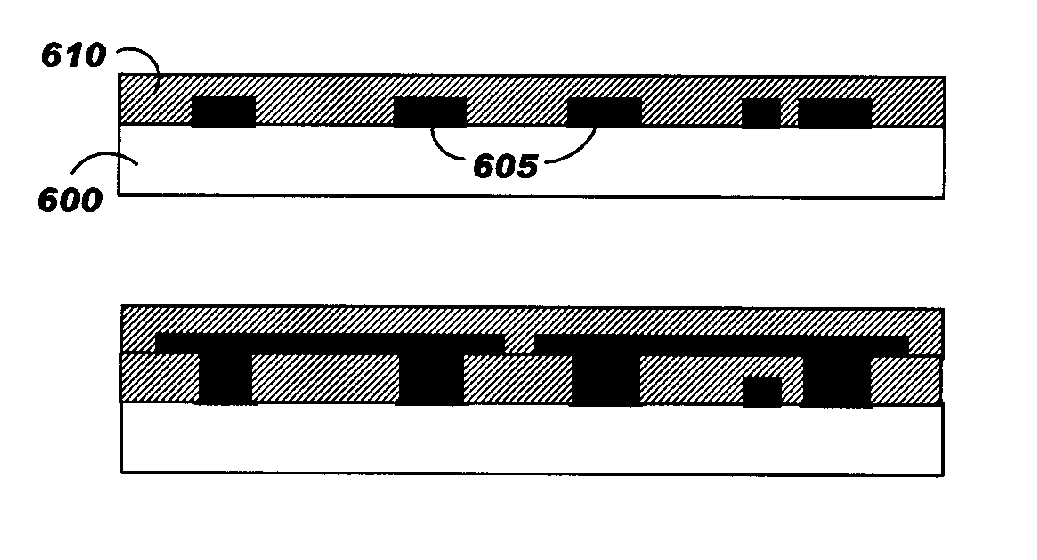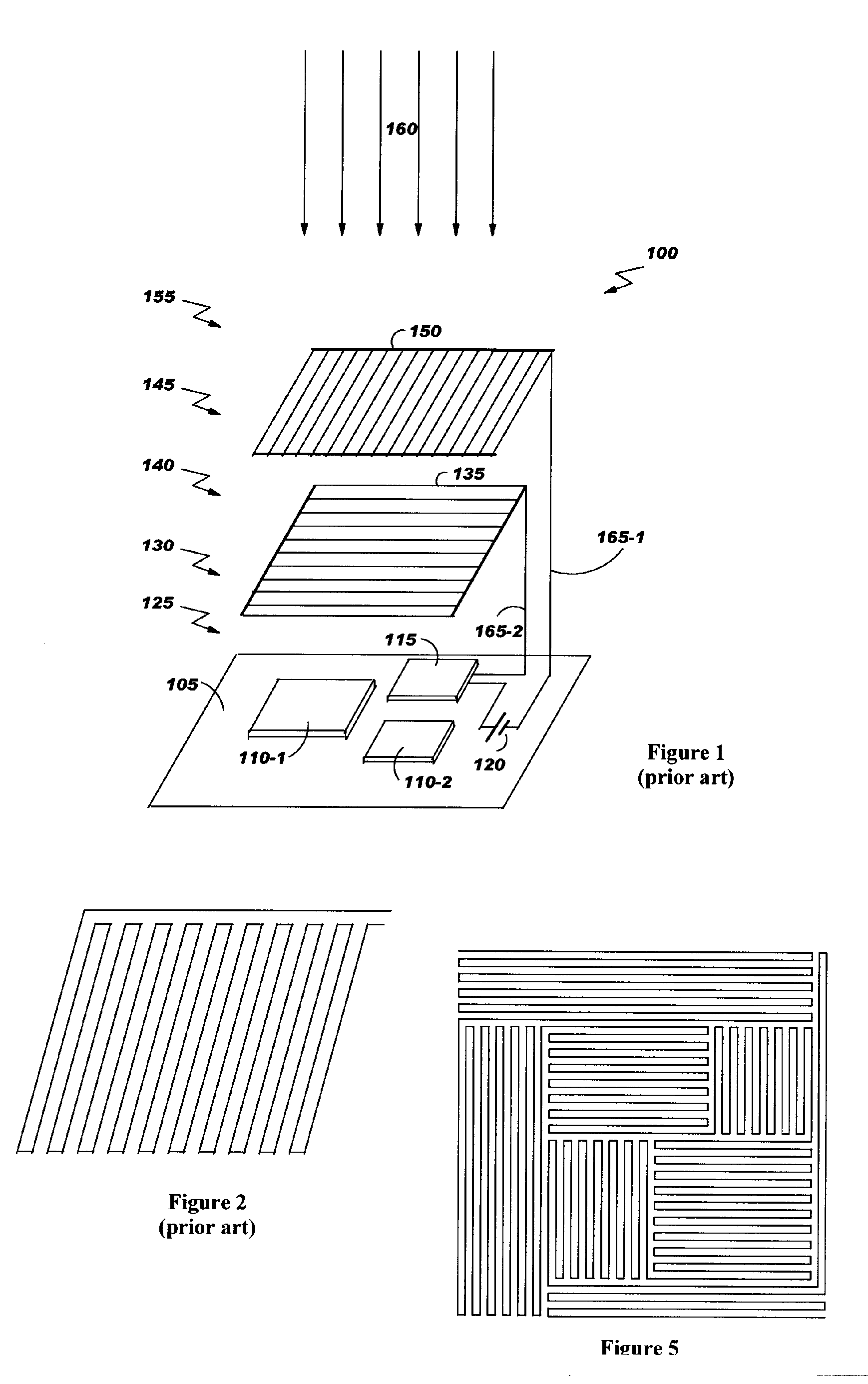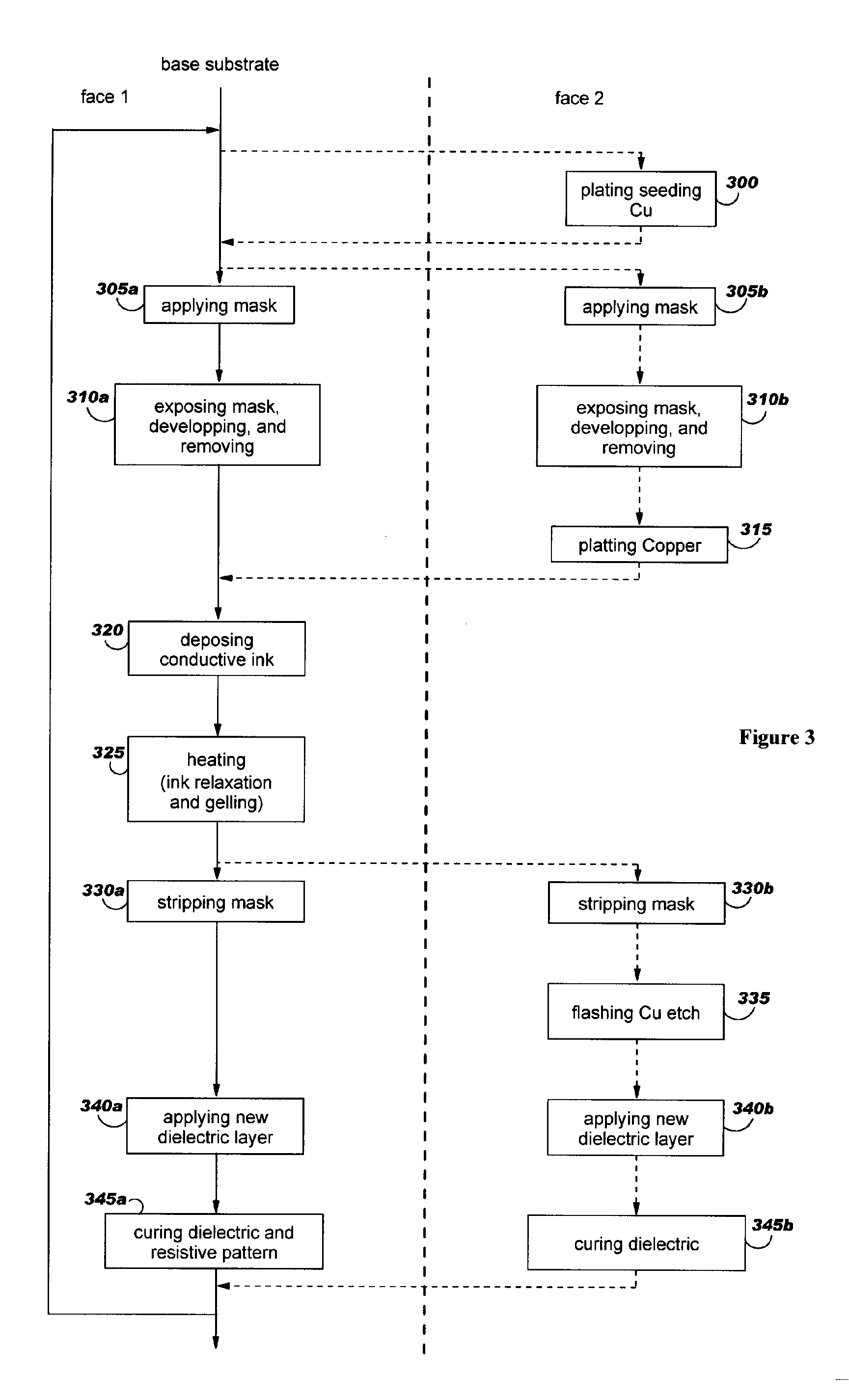Method of embedding tamper proof layers and
a technology embedding, which is applied in the field of embedding, can solve the problems of difficult work, inability to detect a tamper attempt done with insulated tools, and high cost of tamper proof layers as described abov
- Summary
- Abstract
- Description
- Claims
- Application Information
AI Technical Summary
Benefits of technology
Problems solved by technology
Method used
Image
Examples
Embodiment Construction
[0042] According to the invention a conductive ink, preferably a conductive polymeric ink, is placed into a precise pattern embedded into the module laminate stack-up construction.
[0043] In a preferred embodiment the printed circuit substrate is built in respect of symmetry to control mechanical behaviors like induce warpage from differential PCB materials shrinkage (metal, glass, plastic) because these thermo-mechanical strains and deformations are exacerbated when a non symmetrical construction is used. This problem is true also for recent developed technologies where layers are added on a rigid core, that can be a multilayer substrate, made of classical stack up of woven glass cloths impregnated with resins and copper sheets etched with circuit patterns. The reinforced or non-reinforced cores and may include an epoxy, polyester, cyanate ester, bismaleimide triazine, polyphenylene ether, annylated polyphenylene ether, polynorborene, liquid crystal polymer (LCP), Teflon, polyimide...
PUM
| Property | Measurement | Unit |
|---|---|---|
| Viscosity | aaaaa | aaaaa |
| Color | aaaaa | aaaaa |
| Adhesion strength | aaaaa | aaaaa |
Abstract
Description
Claims
Application Information
 Login to View More
Login to View More - R&D
- Intellectual Property
- Life Sciences
- Materials
- Tech Scout
- Unparalleled Data Quality
- Higher Quality Content
- 60% Fewer Hallucinations
Browse by: Latest US Patents, China's latest patents, Technical Efficacy Thesaurus, Application Domain, Technology Topic, Popular Technical Reports.
© 2025 PatSnap. All rights reserved.Legal|Privacy policy|Modern Slavery Act Transparency Statement|Sitemap|About US| Contact US: help@patsnap.com



